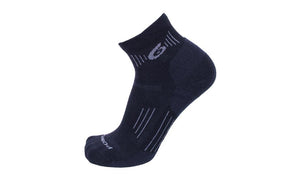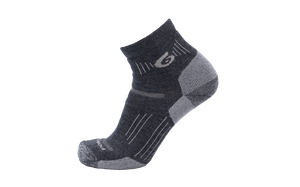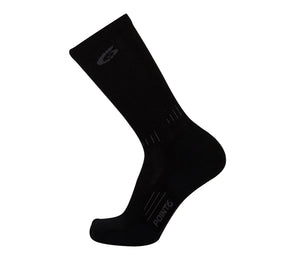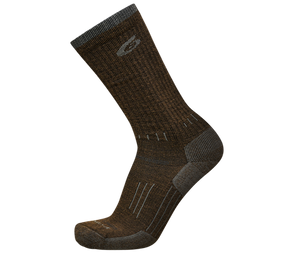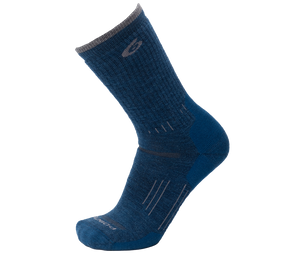Dryland Ski Training: Part 2 – Bumps, Trees and Short Radius Turns

Photo courtesy of PSIA-AASI. Once snow hits and you are stoked to slide, Go With A Pro to get the most out of your new found hip mobility.
Bumps, tress and short radius turns are often the perceived defining element of what a good skier is capable of. However, few do them efficiently. In most cases it is not the skier’s skill that is the limiter. It is that they simply do not have the range of motion in their hips to execute.
According to Dr. Anne Healzer Garske, “When we sit for 8, 10, or 14 hours per day we develop stiffness in our pelvis region to include our hips, and lumbar spine as well as lose the motor connection of our brain to our hips to perform the job of movement.” That’s right, we lose the motor connectivity. We forget the how, of moving our hips.
Dr. Healzer went on to explain that “Skiing is a multi-planar movement. So much of what people choose to perform in terms of exercise is primarily in the frontal plane. Running and biking, specifically, will create muscle and joint imbalances as the motion all occurs in one plane.”
As we explained in Dry Land Ski Training: Part 1, no one can accurately tell you what exercises you should be doing. There are trends, but for 100% accuracy and granularity of information, assessment with a skilled practitioner is key. That assessment buys you time. It allows you to hone in on exactly what you need to be executing to reach your goals, and to not waste time. A lack of mobility in the hips however, is a trend that we witness in most skiers.
When should you do these drills? Anytime is better than not doing them. It could be while waiting on a flight, or in between meetings, or while binge watching Netflix on a rainy day, or at a rest stop on a road trip. If you are dialed into an existing workout routine, executing these drills first, when glycogen stores are at their highest, is a good strategy. As a ski instructor, Dr. Healzer also notes, “Think of these drills as aiding motor control or coordination. They will improve movement when performing other more explosive or plyometric motions.” And so we find ourselves back to the point where mastery may not depend on muscular strength, but in efficient movement patterns.
These drills, done with consistency, will bring more mobility to your hips. They will not only improve your skiing, but will also allow you to access greater range of motion, and power, for everything that you do.
_________________________________________________________________________
Standing Hip External Rotation: This looks totally Jane Fonda, and a total wimp movement – until about rep 5, set 2.
In the PT world, this is used for improved hip strength. For skiers, it really is great for learning control of hip rotation. Perform slowly and with control. Stop at the top of the motion for a second, and stop at the bottom of the motion for a second, allowing your hip to drop a touch more.
Setup: Begin standing upright, resting your hand on an anchor point, such as a table, at your side. Raise your outside leg straight back and hinge at your hip to lean your torso forward, placing your free hand on your back.
Movement
Keeping your back and lifted leg in line, rotate your body to face away from the table.
In a slow, and controlled manner, rotate your upper body and hips to face your anchor point. Make sure your pelvis and trunk rotate together, and do not lock the knee of your stance leg during the exercise. Note that if your upper body is too low, it will inhibit range of motion.
Do: 10 reps - 3 sets - 1x daily - 7x weekly
_________________________________________________________________________
Standing Anti-Rotation Press with Anchored Resistance:This is another drill that is easy to overlook. And if you have great rotational core stability, if you do Seated Russian Twists with a 45-pound plate, executing these may not be necessary.
Setup: Stand, at a 90 degree angle, to an anchor point where you have a resistance band anchored, knees soft.
Movement:
Begin in a standing upright position holding a resistance band in both hands that is anchored at your side.
Press your arms straight forward. Hold briefly, then bring your arms back in and repeat. Your extended arms, creating a different vector of force, creates the resistance.
Do: 10 reps - 3 sets - 1x daily - 7x weekly
________________________________________________________________________
Seated Hip Rotation Stretch: This drill is my weakest point. It has taken three years of diligent work to execute well, and the changes in my skiing performance have been profound.
Setup: Sit, as shown. Knees bent at 90 degrees. Feet a bit more than shoulder width apart.
Movement:
While keeping both “sit bones” on the ground, rotate your femurs in their hip socket to one side,
Do: 10 reps - 3 sets - 1x daily - 7x weekly / and as often as you can. Often, I finish my day with 30 minutes of stretching before I go to bed. I multi-task this with playing with our puppy. This stretch is one of my go-tos for my evening session.
If you are one of those super motivated individuals, use care not to force this motion. The last thing that you want to do is to damage your labrum.
Featured Socks: Finish Line Imperial
Use code DRYLAND20 to get 20% off your next purchase of socks and accessories at Point6.com

Marty Grabijas is a PSIA Instructor who works at ski areas that provide exceptional guest experiences. His day job, which he is retired from, was as a product developer in the outdoor industry. Off season he is an examiner for whitewater kayaking, rides bikes, and chases high-alpine objectives in Colorado’s Weminuchi Wilderness Area.

Dr. Anne Healzer Garske specializes in orthopaedic manual therapy and is experienced in treating a wide range of musculoskeletal injuries including post surgical cases, complex spine injuries, and injuries related to sport activities. She treats master and professional level athletes.
About PSIA-AASI: More than 32,000 individuals belong to PSIA-AASI (Professional Ski Instructors of America and American Association of Snowboard Instructors), making it the world’s largest organization dedicated to skiing and snowboarding. Simply put: PSIA-AASI gets people stoked on the ski and snowboard experience.








